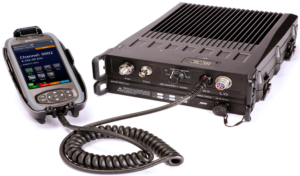
Most emergency communication systems are porous and can be ‘tapped’ into with ease. There is a plethora of different options to make such networks impervious to outside interference by hostile parties. The most obvious targets are those that deal with military or governmental organisations, but this does not preclude other critical public infrastructure communications networks, such as those for the emergency services, medical facilities, airports and information storage areas, such as data centres.
This is where secure radio communications systems are set up using high-frequency (HF) and very high frequency (VHF) radios. The various methods to provide security in these networks are:
Data encryption for emergency communication systems
Transmissions over HF radios can be secured through a number of options, including DES (Data Encryption Standard) 56 and AES (Advanced Encryption Standard) 256. This will ‘encrypt’ communications using an unbreakable algorithm, for which there is a unique mirror key that makes the message available to only the recipient’s system with the corresponding code. To anyone else listening, the transmission is unintelligible.
Secure call
This option provides a secure connection with a four-digit PIN on each radio. Communication between radios in such a network is enabled as either point-to-point or point-to-multipoint (group calls). Similar to military frequency-hopping systems, it uses a particular assigned channel and can ‘hop’, or change frequency, between 4 to 15 times a second as per the user’s choice.
Frequency hopping
A really difficult nut to crack, this method uses a rapidly changing set of broadcast frequencies at both the transmitting and receiving end. This ‘hopping’ pattern is discernible only to units that are pre-set to talk to each other.
Public safety organisations that support a city’s population, to keep them safe from fire, flood and a host of other threats, are recommended to utilise this kind of secure platform. Insecure communication networks give rise to negative scenarios that can have the potential of causing significant damage to civil life and property.
A city’s fire, search and rescue services occasionally need to work with local and national governmental organisations that may be employing a varied level of encryption/decryption systems, so emergency communications may have to be in ‘clear’. In most cases, these may not have a detrimental effect, but we must consider the worst scenarios where ‘hacked’ channels can cause miscommunications and a possibly harmful effect on remedial operations.
Cyber defence in emergency communication systems
A comprehensive and intelligent approach to cyber-attacks and cyber-crime is critical to the successful mitigation of all possible issues that may be caused by potential bad actors. There are many solutions available, but only a few can provide a depth of experience and range of products such as Barrett Communications. The company has been in the secure communications business for many years and has clients across military and civil organisations.
It has crafted hundreds of custom-engineered secure communications solutions to protect critical infrastructure for a variety of customers. Its broad range of secure communications equipment allows it to put together systems that will provide the toughest defence against intrusion or interruption.
There are pre-defined bundles of products available that can be suitable for some companies but, in the main, most solutions require some unique tweaking after initial discussions and analysis of a customer’s requirements.

Tactical radio systems
One such bundle is based around Barrett’s centrepiece tactical HF communications equipment. This contains a base station (part number – 4092-00-10), which can be married to the portable manpack (part number – 4090-00-10) and/or the tactical mobile (part number – 4091-00-10).
Each of these is designed for ease of use and combines to provide email, data and mobile connectivity in an ultra-secure HF network that can additionally be connected to the wider world of international networks. They can be configured to be controlled from iOS, Android and Windows mobile devices using the 4000 series HF remote control app. There are several other products in this range that can be added for additional functionalities if required.
Another tactical group of products is in the VHF range. This also has a base unit (PRC-2084+ 50 W), a portable manpack (PRC-2081+ 25 W), a mobile package (PRC-2082+ 50 W) and several other pieces of equipment that can be added if the solution needs extra functions. These, as well as all Barrett equipment, lead the field in secure, robust and innovative communications solutions that attract customers globally. Its continued investment in research and development (R&D) ensures it maintains its edge.


